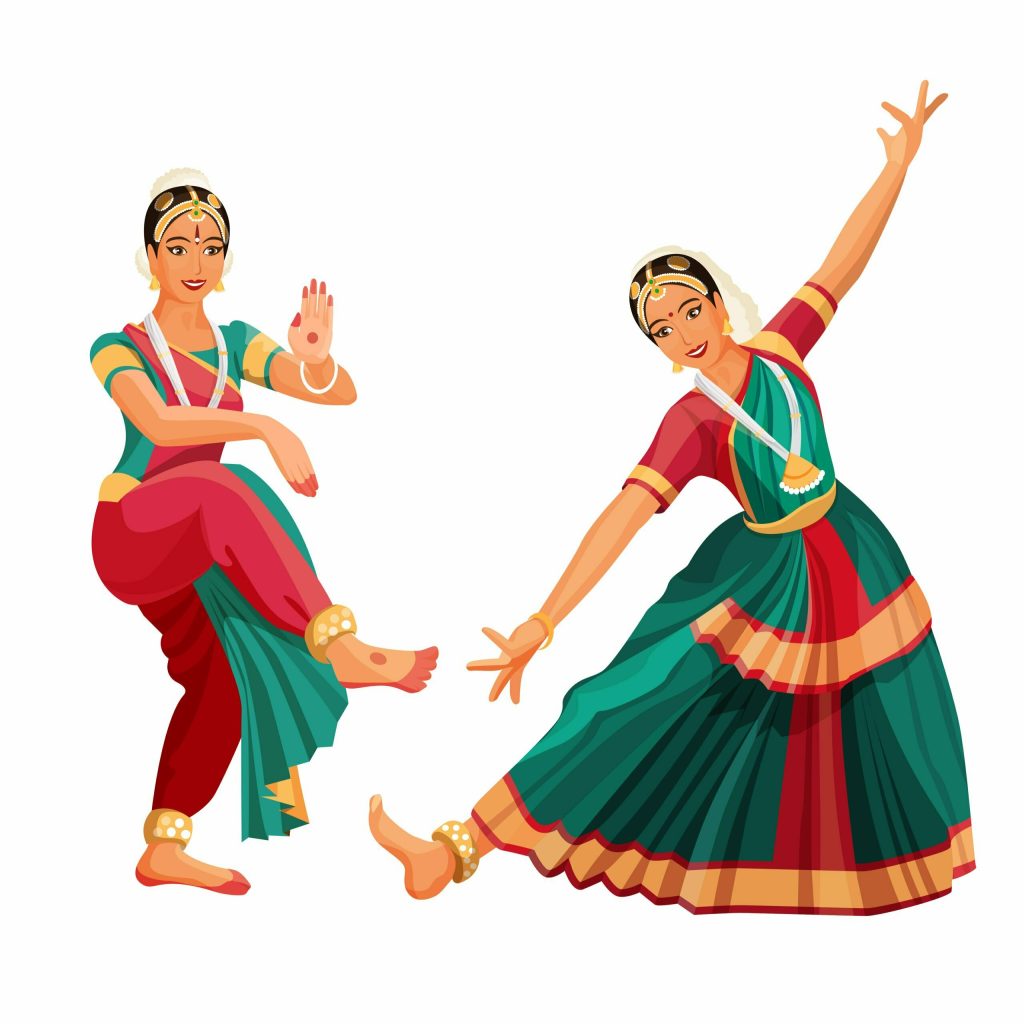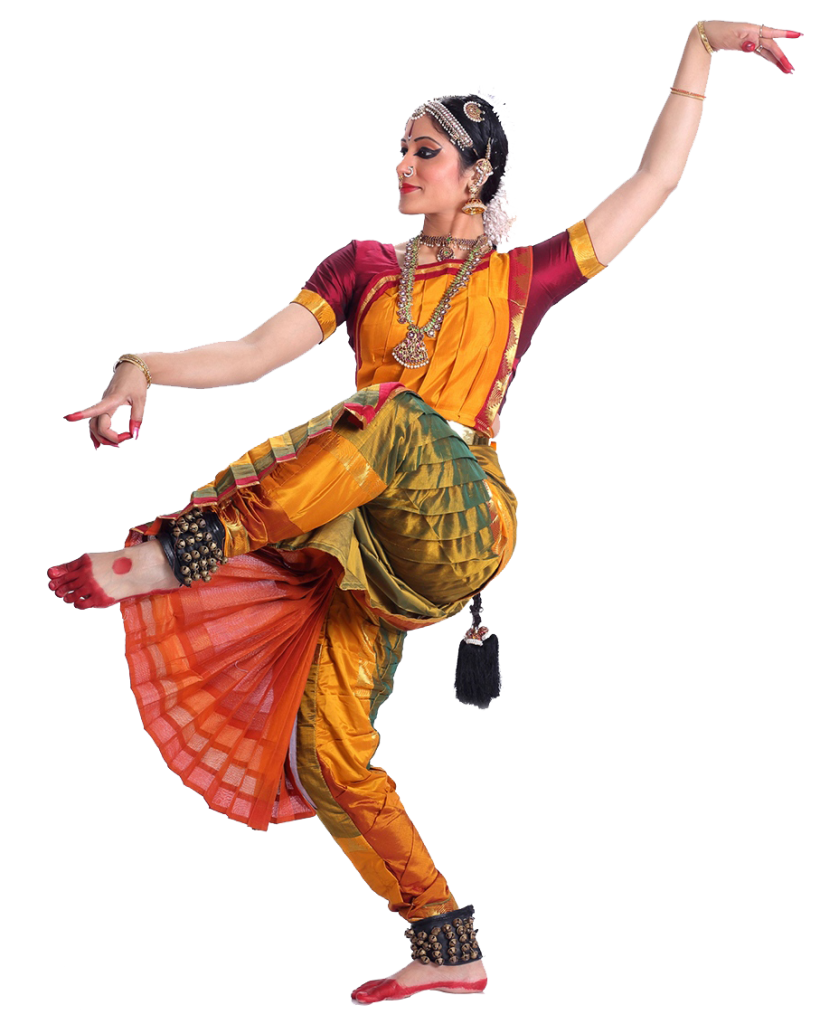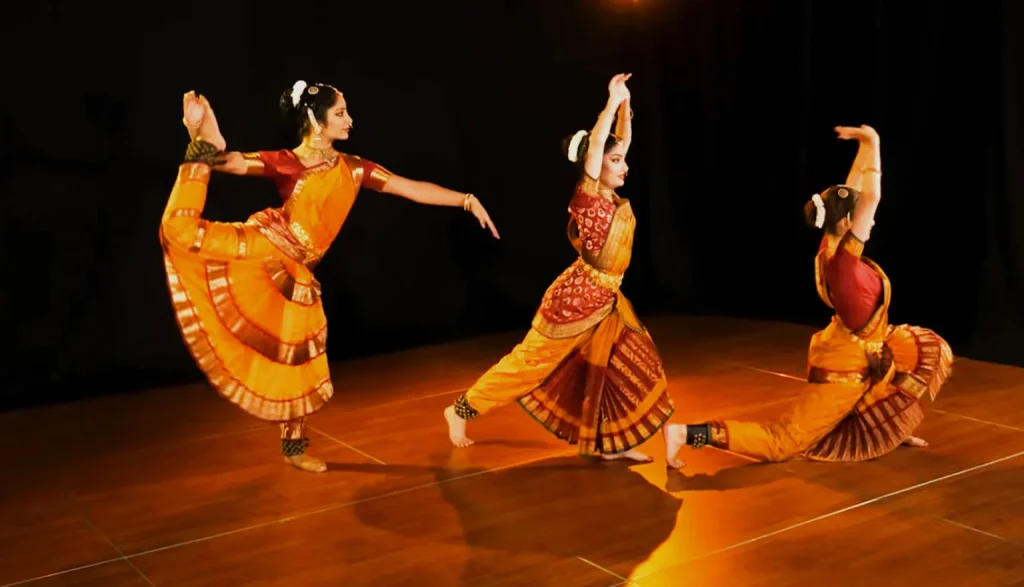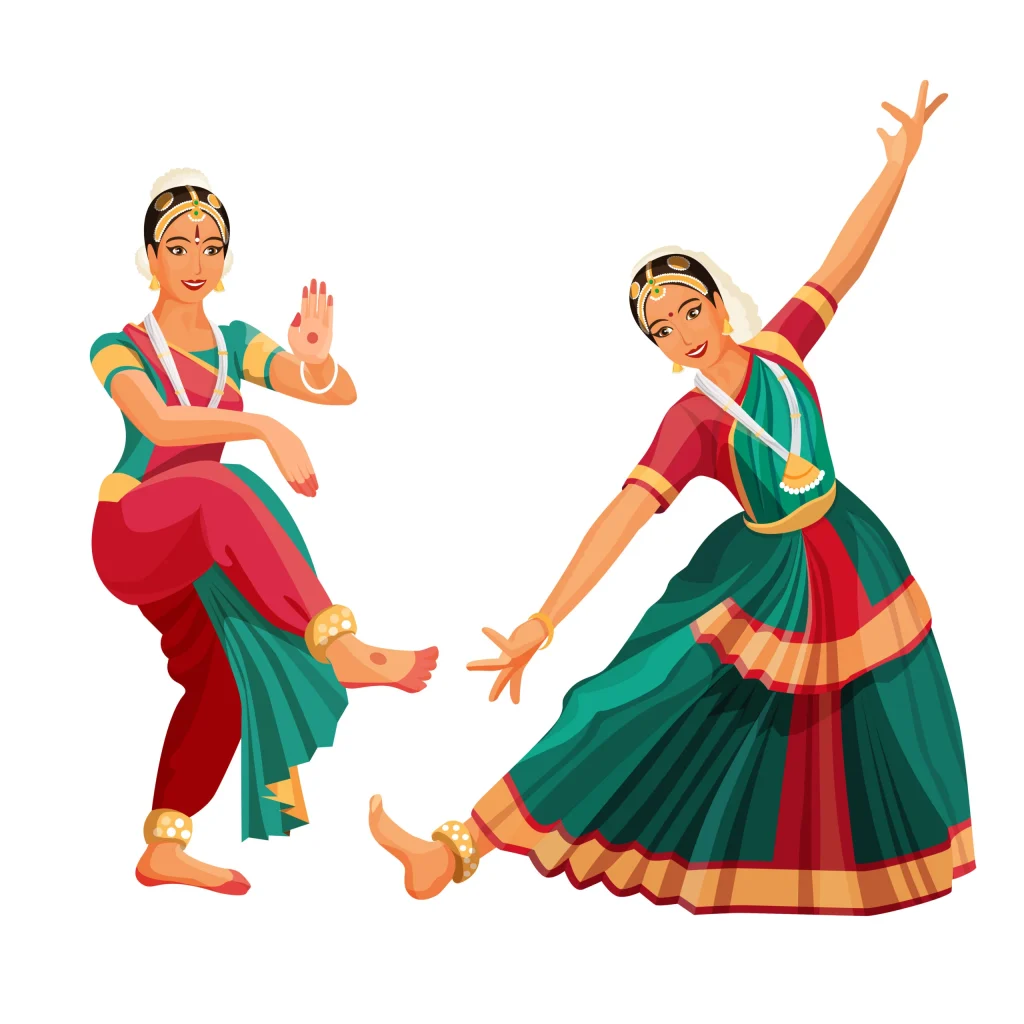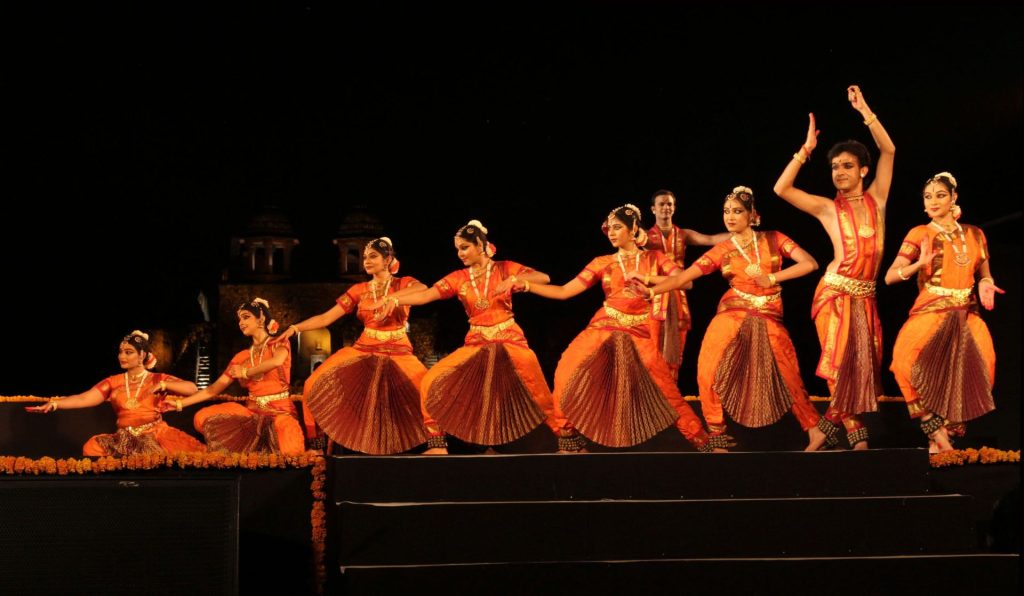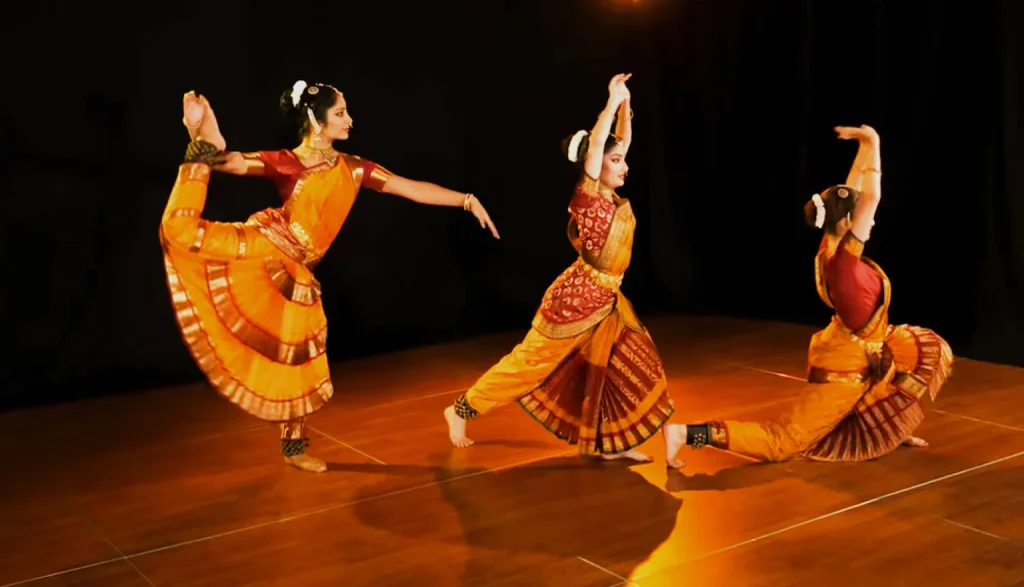Among the 8 classical dance forms of India, Bharatanatyam is one of the most popular ones. This dance form has unique identification features which make the dancer and the performance look different from any other dance form. Bharatanatyam has unique distinctive characteristics like Mudras, Adavus, Body Posture, Costume and many others. In this lesson, we will learn the Bharatanatyam unique identification features.
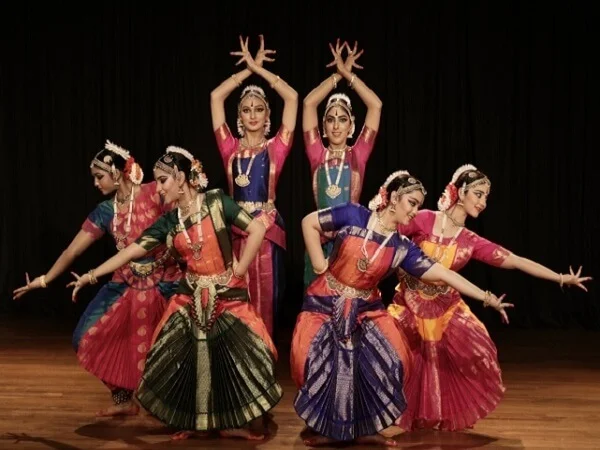
Mudras or the Hand Gestures
Mudras and the Hand gestures constitute both the Samyukta Hastas or Mudras. Samyukta mudra is performed in both the hands and the Asamyukta Mudra whereby different mudras are performed in both hands. Hand movements are very necessary for this dance form.
Body Postures
The main characteristics of the Bharatanatyam form include its three main body posture. Among these, the characteristic feature is that it is mostly performed with the knees bent as well as most in a sitting position. This is the basic posture that Bharatanatyam comprises.
Sequences
The Bharatanatyam also has a unique sequence in which it is performed, which are, the Alarippu, Jatiswaram, Shabdam, Varnam, Padam, Tilana, Slokam, and Mandalam. These are the continuous sequences in which the dance is performed.
Adavus
Adavus form the basic dance moves in Bharatanatyam. Any classical dance form depends upon the Adavus of that dance form. In Bharatanatyam also adavus form a very important component that needs to be learned with great perfection. It the inculcation of the basic combination of movement of various parts of the body which is done according to the ‘tala’. It forms the main component in learning Indian dance forms
Banis and Gharanas
Banis are the various gurus and gharanas under which the dance form is learnt. Hence various gharanas have some or the other difference and ways in which the dance form is learnt. Bharatanatyam was specifically the dance form that was performed in South Indian temples and constitute ancient cultures and traditions. These dance forms were also performed in royal courts and were known as dancers who used to do it were called the devadasis.
The Navarasa
The Bharatanatyam dance form includes the nine moods which are portrayed with this dance form. These dance form includes communicating the expressions of peace, happiness, sadness, love, disgust, and so on. These facial expressions are very significant in performing the Bharatanatyam dance form. Without these expressions, these dance forms appear lifeless.
Costumes
The costume of Bharatanatyam is also unique whereby it mainly represents the apparel of a bride in Tamil Nadu. This dance form includes the wearing of a small cloth at the lower portion of the dress which is pleated like a fan. Whenever the postures of Bharatanatyam are performed, especially during the sitting position. The fan-like cloth gives a very nice look and enhances the beauty of the posture. Also, this dance form includes wearing very attractive jewellery which also makes the dance form look vibrant.
Instruments
Mainly Carnatic musical instruments like mridangam, south Indian veena, flute, violin is used with this dance form.
The above 8 are the unique identification features of Bharatanatyam dance. You can visit this link to know more
Share with your friends

